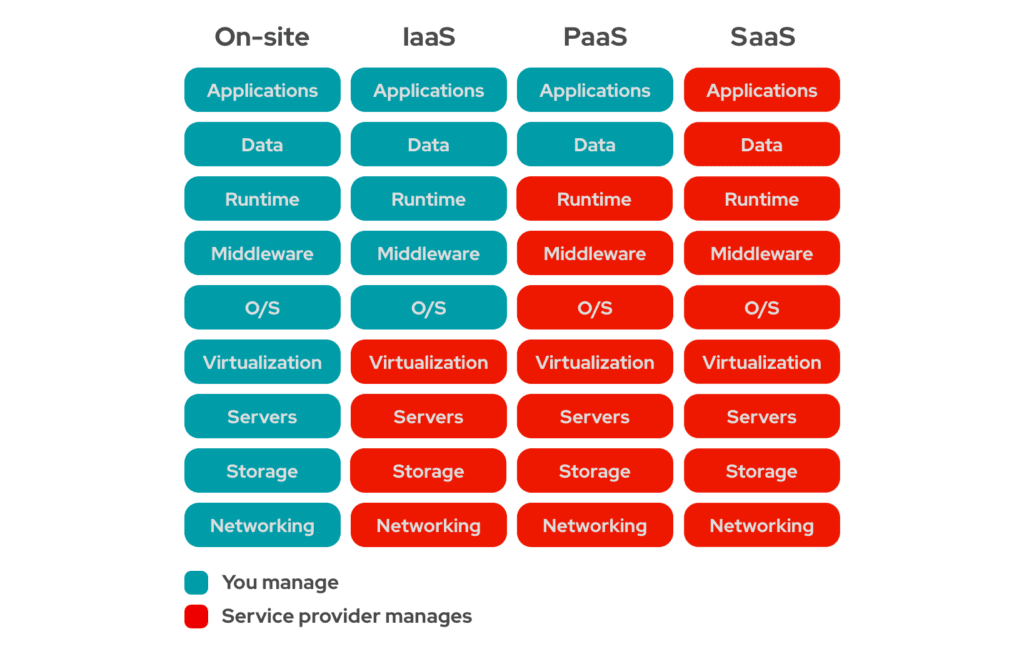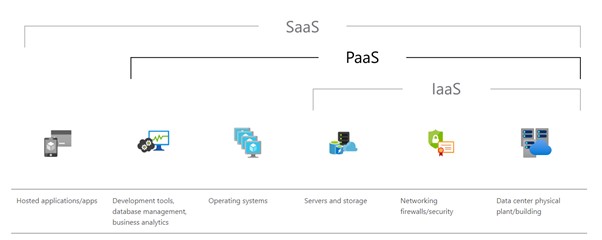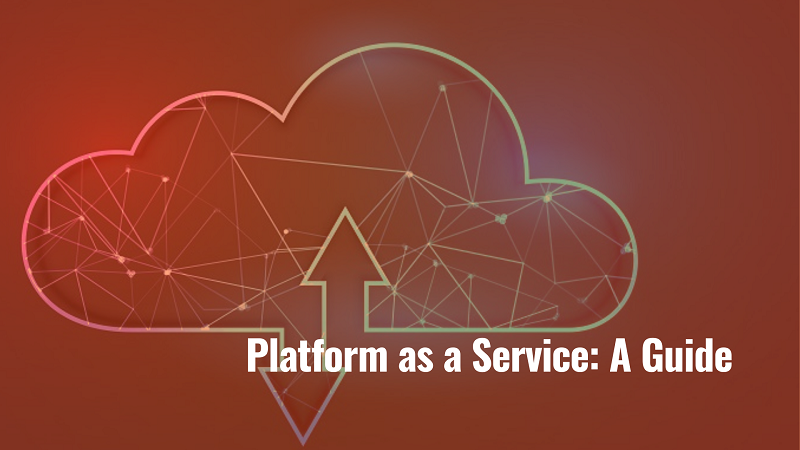Cloud computing has conquered our lives, from massive on-premise systems and storage hubs to fully virtualized storage platforms. Today, organizations are reengineering their strategies rapidly into cloud-friendly which resulted in a rapid growth in cloud migration rate. Studies says, worldwide cloud infrastructure services investments are increased to $41.8 billion in the first quarter of 2021. Because, there is always a double-fold benefit from the cloud transformation. A one-time investment in cloud can help businesses grow strong in upcoming market penetration with product and market diversification development.
In this blog, let’s explore exclusively about Platform as a Service (PaaS) and its benefits, types and use cases.
Types of Cloud Services
Lorem ipsum dolor sit amet, consectetur adipiscing elit. Ut elit tellus, luctus nec ullamcorper mattis, pulvinar dapibus leo.
Add Your Heading Text Here
There are three types of on-site cloud service models available, which are destined for different purposes- namely- SaaS, PaaS, IaaS.
- SaaS – Software as a Service (SaaS) is the topmost layer designed for end-users. SaaS is a one-stop solution for your end-to-end applications where the third-party service providers entirely take and manage all the activities.
- PaaS – Platform as a Service (PaaS) is the middleware service model used by application modernization team and developers to create new enterprise websites and build upon existing frameworks according to the business purpose. PaaS developers maintain the data and applications that act as a catalyst for transforming businesses digitally.
- IaaS – Infrastructure as a Service (IaaS) is the bottom-most service layer. Infra developers securely migrate the built applications to the virtual cloud for efficient management and resource network access. IaaS provides optimal services compared to SaaS and PaaS, where networking and storage are within the service provider’s infrastructure. Middleware and runtime maintenance costs could be an extra expense.

Source: Redhat
Why is PaaS the most opted service model in organizations?
PaaS is a cloud-based service that provides cloud environment to develop frameworks for existing web applications and create custom-based web applications. Third-party vendors use PaaS to built and manage servers and data centers. PaaS is mainly responsible for streaming on online platforms. The decision support obtained from the PaaS service model recommends leveraging the data usage and storage population in an efficient way to be used in the future.
The PaaS benefits beginners in many ways. Let us have a look into it.
- PaaS helps the developers to create accessible and manageable web infrastructures and frameworks customized for business purposes.
- PaaS allows excellent scalability according to the enterprise’s needs.
- The data stored in the cloud offers significant availability for users connected over the same network.
- PaaS cloud helps the organization cut down the expenses for physical data storage setup and maintenance costs.
- The self-enhanced service features provided by PaaS guide beginners to establish the cloud-based applications, infrastructure, and middleware data and resources.
- PaaS functionality offers deployment automation, infrastructure management, and container orchestration with accessible plugin models.
- PaaS development tools can reduce the coding time needed to code new applications with pre-coded application components built into the platform, such as workflows, directory services, security, and search features.
- PaaS enables cross-platform development to create applications faster for multiple platforms, including mobile service providers, to offer cross-platform development options, such as PCs, mobile devices, and browsers.
- The pay-as-you-go cloud service model allows enterprises to use business intelligence with advance developed software and analytics tools that are highly expensive. So, individuals or organizations can use sophisticated on-go cloud tools at an affordable price.
PaaS provides all the security functionalities you need to support the entire lifecycle of your web application, including build, test, deploy, manage, and update in the same integrated environment.
How do businesses find PaaS superior to IaaS and SaaS?
PaaS is a middleware cloud environment found between the SaaS and IaaS, but PaaS does not control SaaS and IaaS. The PaaS service model focuses on what the organization manages and how cloud service providers collect information about infrastructure network, server, storage, and virtualization. It contains operating systems, middleware, runtimes, data, applications, and everything in between that you can think of this as a layer above the infrastructure as a service. SaaS inherits the PaaS deployment tools for hosting software in cloud platforms that the end-users can access through web browsers over the internet. PaaS offers a runtime platform environment for the developers to construct customized web and mobile applications. Compared to the IaaS, the PaaS service model provides a higher level abstraction in migrating to the cloud. The cloud service provider is responsible for your business’s cloud deployment. So you don’t have to worry about managing the network or the underlying infrastructure, installing or updating operating systems, critical patches, runtime environments, middleware components, etc., and you can focus on what’s essential to your business.

Source: Microsoft
How is PaaS used in Enterprises?
Platform services help developers to create business-oriented custom apps. For say, One of your customers wants to place an order from your website and receive it by next week. The merchant can be made easy by creating a business-focused retail application customized for web and mobile applications. The application will help your customers place orders with a few clicks and deliver quickly by notifying and tracking the order movement from start to end. The best part of having an application is that the cloud takes over your business operating systems, software updates, storage, or hard disks because everything is in the cloud.
How is PaaS used in Software Development Teams?
Software development teams initially started using PaaS. As the name suggests, it provides a software application development platform as a complete development and deployment environment in the cloud. PaaS with SaaS helps the team migrate and deliver anything from a simple cloud-based application to complex cloud-enabled business applications. For example, suppose you develop a data-driven web application. That requires a framework like asp.net or core java, and it would be best if you had a database like SQL Server or Oracle. The integrated cloud service models will help if you have a webserver to host and run your web application; instead of developing it from scratch, purchase and install all software plugins to set up and maintain your development environment. With Platform as a Service, cloud service providers provide, install, and configure all the software with a secure internet connection over the cloud network.
Common PaaS types used in Enterprises
- Public PaaS: Public PaaS allows end-users to control software deployment and allows cloud providers to manage and deliver all critical IT components required to host the mobile and web applications. Some small scale and medium enterprises have adopted public PaaS, but large organizations and businesses have declined due to their close relationship with the public cloud. That primarily depends on the public cloud with several regulatory and compliance issues affecting the development of business applications.
- Private PaaS: Private PaaS aims to provide the flexibility of public cloud services while maintaining the security, compliance, and benefits of private data centres by potentially reducing the setup and maintenance costs. Personal cloud assistance can be developed on any infrastructure and run in a company-specific private cloud that allows developers to deploy and manage business applications while meeting strict security and privacy requirements.
- Hybrid PaaS: The integrated PaaS combines public and private cloud computing to provide businesses with the endless possibilities of public cloud flexibility and the cost-effectiveness of owning in-house infrastructure defined in private mode.
- Open PaaS: Open PaaS is a free, open-source, business-oriented collaboration platform that provides interactive and convenient web applications on all devices. Open PaaS is designed to help users quickly deploy new applications to enhance PaaS technology and leverage hybrid cloud deployment in collaborative business applications.
- Mobile PaaS (mPaaS): Mobile PaaS uses a paid integrated development environment to configure mobile applications. mPaaS model requires optimal or no coding skills to survive in cloud environments. The developed mobile productivity apps can be built without any additional IT support with mPaaS plugins.
- Communication PaaS (CPaaS): CPaaS is a cloud-based platform that enables framework developers to develop real-time communication added to the built applications. These applications are hosted without the need for back-end infrastructure. CPaaS vendors assist users throughout the development process by providing documentation and product support. Some vendors also offer software development kits that hold a library to help you build apps on various desktop and mobile platforms.
- Application PaaS (aPaaS): aPaaS provides a reliable framework for developers to develop or customize applications based on the cloud using built-in software components.
- Business Intelligence PaaS (BIPaaS): With the business tools offered as PaaS service, organizations analyze and extract data to obtain information and models that predict outcomes and make decisions regarding product design, ROI, and other activities to improve on previous findings, workflow, directories, security, scheduling, and other applications.
Top PaaS Vendors
PaaS helps you manage your business in the cloud by subscribing to PaaS platforms that render services with the Pay as you Go model. When you no longer needed cloud services, you can unsubscribe from the services. Some of the top PaaS vendors in 2021 are:
- Windows Azure
- Amazon Web Services Elastic Beanstalk
- Google Cloud Platform.
- SalesForce
- IBM-BlueMix
- RedHat -OpenShift
- Oracle Cloud Infrastructure
Bottom Line
Businesses either be small or large; when choosing a cloud service model for digital computing, PaaS provides an efficient solution. PaaS model offers high scalability and availability with the capabilities of hosting multiple websites by reducing the amount of coding the developers need to do with easy plugins. By deploying the PaaS service model, you no need to worry about the business operations. The service providers secure your data in the virtual cloud accessible according to your enterprise needs. The effective way of renting virtual cloud would gear up more promising opportunities for business development in the future.


